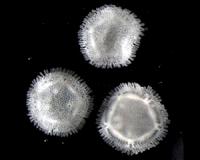| . |  |
. |
Brussels (AFP) May 4, 2011 Europe set new targets Tuesday to halt a mainly man-made loss of species costing billions each year as campaigners called for tougher environmental demands on farmers. "It's our natural capital that we are spending too fast -- and we all know what happens when we borrow beyond our means," said European Union environment commissioner Janez Potocnik. In the EU, around one in four species are considered "threatened with extinction," he said. Worldwide, species and natural habitats are lost at "alarming rates... up to 1,000 times the natural rate." Eighty-eight percent of fish stocks are either "overexploited or significantly depleted," as are a quarter of animal species, including "mammals, amphibians, reptiles, birds and butterflies." Potocnik was unveiling new guidelines for EU governments to follow in a call to arms for the bloc's 27 member states, and insisted national treasuries would be making "a much smarter investment" by focusing on prevention rather than a cure. The Slovenian commissioner said it should be a condition for obtaining grants that EU farmers respect environmental engagements, and suggested that fish whose stocks are low should not be pulled out of the sea. Alberto Arroyo, a conservation expert at the World Wildlife Federation, said the commission had signalled "good intentions," but stressed meaningful action would only come with reform of the EU's budget, 40 percent of which goes on farm subsidies. Reformers who want radical changes to agricultural, fisheries and development funding, saying subsidies should be conditional on environmental targets. Breaking the cycle there will be the "real test," he said of whether political leaders realise "what biodiversity is and why it is so important to us." European Parliament lawmaker Sandrine Belier, who stands on a Green ticket, likewise said Tuesday's strategy was "too flimsy," and lacked "concrete measures" to enable the EU to reach its revised 2020 objective. So far, scientists have identified 1.9 million species (perhaps five percent of all living things), and between 16,000 and 18,000 new ones, essentially microscopic, are documented each year. Eighteen percent of EU land is covered by legislation to protect the environment, under a programme of designated 'Natura' territories, but only four percent of coastal and marine areas enjoy similarly safeguards. In one striking example, Potocnik said some "35 percent of food resources... depend on pollination by bees and other pollinators" and cited research that insect pollination in the EU has "an estimated economic value of 15 billion euros per year." He said the "uncontrolled spread on non-native land of animals or insects" from other habitats "causes some 12.5 billion euros worth of damage each year in the EU." The European Commission readily admitted that 2010 EU targets were badly missed, hence the recalibration after a United Nations conference set out global goals last year in Nagoya, Japan. The new Brussels strategy followed commitments made by EU leaders in March 2010 -- to "halt" the loss of EU biodiversity by 2020, and "protect, value and restore" EU biodiversity by 2050. Lost "mainly due to changes in land use, pollution, the over-exploitation of resources, the uncontrolled spread of non-native species and climate change," Potocnik set out a six-pronged approach to tackling the problem. He listed: "Full implementation" of existing nature protection legislation; "increased use" of green infrastructure; "sustainability of agriculture and forestry" activities; "safeguarding" fish stocks; controlling invasive species; and "stepping up" the EU's contribution to global action.
Share This Article With Planet Earth
Related Links Darwin Today At TerraDaily.com
 Rare deep-sea starfish stuck in juvenile body plan
Rare deep-sea starfish stuck in juvenile body planColumbus OH (SPX) May 04, 2011 A team of scientists has combined embryological observations, genetic sequencing, and supercomputing to determine that a group of small disk-shaped animals that were once thought to represent a new class of animals are actually starfish that have lost the large star-shaped, adult body from their life cycle. In a paper for the journal Systematic Biology, Daniel Janies, Ph.D., a computationa ... read more |
|
| The content herein, unless otherwise known to be public domain, are Copyright 1995-2010 - SpaceDaily. AFP and UPI Wire Stories are copyright Agence France-Presse and United Press International. ESA Portal Reports are copyright European Space Agency. All NASA sourced material is public domain. Additional copyrights may apply in whole or part to other bona fide parties. Advertising does not imply endorsement,agreement or approval of any opinions, statements or information provided by SpaceDaily on any Web page published or hosted by SpaceDaily. Privacy Statement |